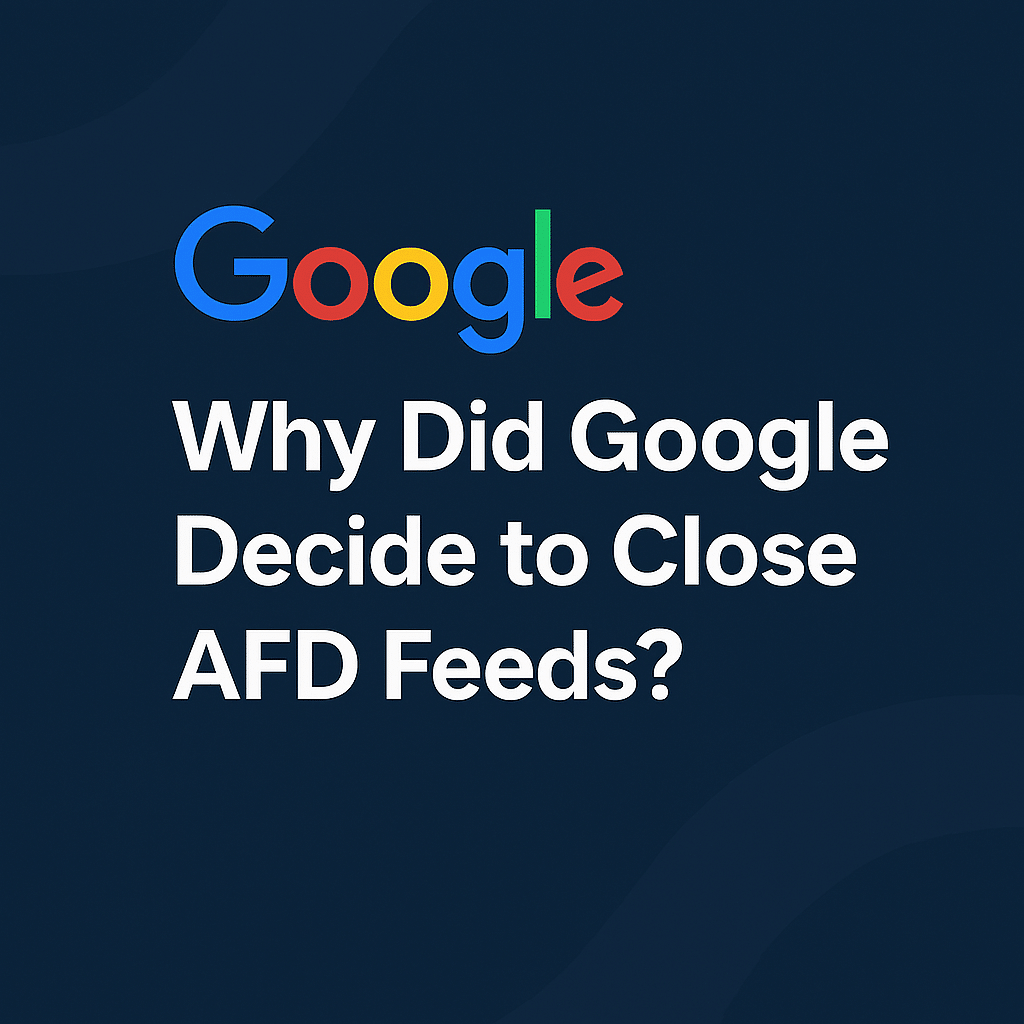For those of us who remember the early days of the internet, the concept of parked domains – those undeveloped digital plots often displaying ads – was a familiar sight. And for many website owners, Google’s AdSense for Domains (AFD) program offered a way to monetize these dormant digital assets. However, the landscape of the web is constantly evolving, and Google, in its pursuit of a higher quality user experience and a more effective advertising ecosystem, eventually decided to sunset AFD.
While the initial closure of the hosted AFD program happened back in 2012, the recent news of Google Ads automatically opting out accounts from showing ads on all parked domains in March 2025 signals a definitive end to this era. This move, though perhaps disruptive for some, is rooted in a series of factors reflecting Google’s long-term vision for the internet and its advertising platform.
To truly understand why Google decided to close the AFD feeds, we need to delve into the core principles that drive Google’s decisions: user experience, ad quality, and the evolution of the web.
The User Experience Conundrum:
At its heart, Google prioritizes the user. Their search engine’s dominance is built on providing relevant and high-quality results. Parked domains, by their very nature, often presented a less-than-ideal user experience. Typically lacking substantial content, these pages primarily displayed advertisements. While this could generate revenue for domain owners, it often frustrated users who landed on these pages expecting valuable information.
Imagine clicking on a seemingly interesting domain name only to be greeted by a wall of generic ads. This disconnect between user expectation and the actual content (or lack thereof) created a negative experience. Google, acutely aware of how such experiences could erode user trust in the internet and, by extension, their platform, had a vested interest in addressing this.
AFD, while offering monetization opportunities, inadvertently contributed to this problem. It incentivized the practice of parking domains solely for ad revenue, often without any intention of developing them into valuable resources. This led to a proliferation of low-quality landing pages that offered little to no value to the end-user.
The Quest for Ad Quality and Relevance:
Google’s advertising platform thrives on connecting users with relevant and engaging ads. This benefits both advertisers, who reach interested audiences, and users, who discover products and services that might be useful. Parked domains often struggled to deliver this level of relevance.
The ads displayed on parked pages were typically contextual, based on the domain name itself. However, without actual content to provide further context, these ads could often be generic, unhelpful, or even misleading. This diluted the overall quality of Google’s ad network and could lead to lower click-through rates and reduced effectiveness for advertisers.
Furthermore, the traffic to parked domains could often be of questionable quality. Users might land on these pages accidentally or through less-than-reputable means. This type of traffic is less likely to engage with ads meaningfully, further diminishing the value proposition for advertisers.
By phasing out AFD and, more recently, automatically opting out of ads on all parked domains, Google is signaling a clear commitment to ad quality. They are prioritizing ad placements on websites with genuine content and engaged audiences, where ads are more likely to be relevant and effective.
The Evolving Web and Alternative Solutions:
The internet has undergone a dramatic transformation since the early days of domain parking. Today, there are numerous ways for website owners to monetize their content and for advertisers to reach their target audiences. The need for a dedicated program like AFD has arguably diminished over time.
Google itself offers a vast array of sophisticated advertising and monetization tools, including AdSense for content-rich websites, YouTube monetization, and various advertising formats within its search results and display network. These alternatives provide more robust and user-friendly ways to generate revenue while delivering value to users.
The recent push towards “Related Search On Content (RSOC)” as a potential replacement for AFD, as mentioned by Team Internet, further highlights this evolution. RSOC focuses on providing relevant search suggestions within the context of existing content, offering a more integrated and potentially more valuable experience for both users and website owners.
The Long-Term Vision:
Google’s decision to close AFD feeds, both the initial hosted program and the more recent move regarding all parked domains, is ultimately a strategic one aligned with their long-term vision for a cleaner, more user-centric, and higher-quality web.
By removing incentives for purely ad-driven parked domains, Google is encouraging the development of valuable online content. This benefits users who are seeking information and solutions, and it benefits advertisers who can connect with engaged audiences on relevant websites.
While the transition may present challenges for those who relied heavily on AFD revenue, it’s important to recognize that the internet landscape is constantly shifting. Adapting to these changes and focusing on creating valuable content and utilizing more modern monetization strategies is crucial for long-term success online.
In conclusion, Google’s decision to close AFD feeds is not a sudden or arbitrary one. It’s a culmination of their ongoing efforts to improve user experience, enhance ad quality, and foster a more valuable and relevant web for everyone. While the sunset of AFD marks the end of an era for some, it also paves the way for a more content-rich and user-focused internet. The focus now shifts towards building valuable online assets and leveraging the diverse range of modern monetization tools available.



